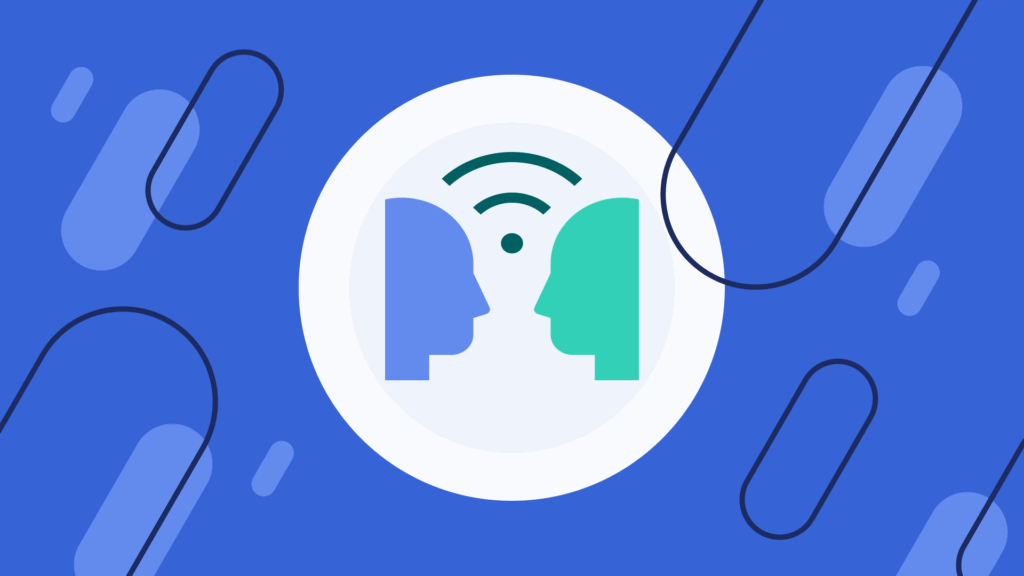Evaluate and measure patient access KPIs
Tap into existing customer conversations to reveal qualitative feedback. This unfiltered, renewable source of insights accounts for every customer voice – even those who don’t respond to surveys.
Unlock the Patient Experience
Actionable customer feedback without survey fatigue. See Authenticx in action:
When have surveys given actionable insights to improve accessibility?
Collecting data is only part of the equation. Understanding begins by listening to gather qualitative context and themes.
Read the Customer Story
Patient Access KPIs
Patient access refers to the ease and efficiency with which patients are able to access healthcare services, including scheduling appointments, obtaining medical records, and communicating with healthcare providers. But why is patient access important, and why do so many healthcare organizations make it a top priority? More importantly, how do patient access KPIs build better healthcare outcomes?
Patient access is important for several reasons. First, it helps to ensure that patients receive the care they need in a timely and efficient manner. By improving patient access, healthcare providers can reduce wait times for appointments and procedures and see to it that patients can access their medical records and communicate with their healthcare providers as needed.
Additionally, patient access is important for hospital operations, as it helps to reduce the burden on staff and resources. This allows providers to improve the efficiency of care and cut costs where appropriate. The less time they have to spend coordinating and directing patients, the more resources they have to invest in other services.
One of the best ways to ensure easy access to healthcare services is by promoting patient access education. Equipping patients with information on how to access services empowers them to take an active role in their own healthcare. This can help to improve patient outcomes and satisfaction and alleviate the burden on doctors.
In order to properly care for patients, providers must have access to accurate, updated medical records and other relevant information. So what is the standard for accessing patient information? Essentially, it requires that patient information be stored in a secure manner and that providers have the necessary tools and training to easily access it.
Primary care access metrics can be useful in determining the extent of patient access. These are a specific subset of patient access key performance indicators (KPIs). They might include the percentage of patients who have access to primary care within a certain timeframe, the average wait time for primary care appointments, or the number of patients who are able to access telemedicine services for primary care.
By tracking patient access KPIs over time, healthcare providers can identify areas for improvement and make changes to improve patient access. This is critical to expanding access to healthcare and improving treatment overall. Authenticx allows users to obtain key insights into healthcare outcomes.
Users can analyze patient voices to get a big-picture look at what’s working well and which practices could be modified to improve the patient experience. With the Authenticx platform, healthcare companies can un-silo their data and confidently take action on their most critical initiatives.
What is Patient Access in a Hospital
Many factors determine whether or not patients receive the care they need. It’s incumbent upon healthcare organizations to study and address these factors in order to improve health outcomes for those they serve. But what is patient access in a hospital? In the context of hospital care, patient access refers to the extent to which patients are able to access care.
The impact of patient access on hospital operations cannot be overstated. By improving patient access, hospitals can create a better treatment experience for everyone involved. Providers can also make more informed decisions about patient care by expanding access to treatment. This benefits not only current patients but those who will be accessing care in the future.
One important aspect of patient access is patient access to electronic health records (EHRs) specifically. EHRs allow providers to access up-to-date patient information, which can improve the quality of care and reduce the risk of medical errors. What’s more, these records can help improve the efficiency of hospital operations by reducing the need for paper records and manual data entry.
Patient access representatives also play a critical role in patient access. So what is a patient access representative? A patient access representative is a person responsible for managing the patient access process in hospitals. These individuals schedule appointments, manage patient records, and communicate with patients and healthcare providers.
In recent years there have been several important developments in patient access legislation. For example, the 21st Century Cures Act, which was signed into law in 2016, includes provisions that improve patient access to medical records. This patient access to medical records new law ensures that patients have the right to access their medical records in an electronic format.
A crucial area of patient access that has received increased attention in recent years is telehealth. Telehealth allows patients to access healthcare services remotely, which can improve access to care for individuals in rural or underserved areas. It can also reduce the need for in-person appointments, thus boosting the efficiency of hospital operations.
Healthcare organizations that prioritize access to care and medical records can significantly improve the quality of care they provide. As such, more and more hospitals and providers are developing patient access strategies to ensure they meet their most pressing goals.
How It Works
Gain a deeper level understanding of contact center conversations with AI solutions.
See a PreviewAggregate
Pull customer interaction data across vendors, products, and services into a single source of truth.
Analyze
Collect quantitative and qualitative information to understand patterns and uncover opportunities.

Activate
Confidently take action with insights that close the gap between your organization and your customers.
Patient Access Management
Patient access management is the process of managing patient access to healthcare services, including scheduling appointments, obtaining medical records, and communicating with healthcare providers. It is vital to optimizing patient access and hospital operations, and it comprises several key components.
The first component of patient access management is the ability to assess a patient and their needs, and then chart an appropriate course of action. This may involve determining the urgency of a patient’s condition, identifying a healthcare provider, or scheduling an appointment in a timely manner. In order to be effective, patient access management must be flexible and responsive to the needs of patients.
Another key component of patient access management is the use of patient portals. A patient portal allows patients to access their medical records and communicate with their providers securely and conveniently. By giving patients access to their medical records and other healthcare information, patient portals can improve patient engagement and satisfaction, and reduce the burden on administrative staff.
Patient access management also requires a high level of competency and training among staff. A patient access competency checklist can be used to ensure that staff members have the necessary knowledge and skills to perform their roles effectively. Checklist items might include:
- Knowledge of patient confidentiality laws and regulations.
- Familiarity with scheduling protocols and procedures.
- Understanding of medical terminology and coding systems.
- Ability to accurately collect and enter patient information into EHRs.
- Familiarity with insurance verification processes and requirements.
- Knowledge of patient payment policies and procedures.
- Ability to handle patient complaints and escalate issues as necessary.
- Understanding of telehealth technologies and procedures.
- Familiarity with patient portal systems and ability to assist patients in navigating them.
- Ability to communicate effectively with patients, providers, and administrative staff.
In order to ensure that patient access management is effective, healthcare organizations must establish patient access productivity standards. These standards may include metrics such as the average time to schedule an appointment, the percentage of patients who are able to access their medical records online, or the number of patients who are able to schedule via mobile apps or other digital channels.
Patient Access Metrics
Patient access metrics are important when it comes to measuring and monitoring patient access in healthcare. They can be used to evaluate the effectiveness of patient access initiatives and identify areas for improvement. This is critical to improving patient satisfaction and care quality.
There are several different metrics that are commonly used to measure and monitor patient access. These include the average wait time for appointments and the number of patients who are able to easily access their medical records online. By tracking these metrics, healthcare organizations can identify areas of concern and work to address those issues.
Patient access performance evaluation is an important element of patient access metrics.
This process typically involves evaluating the competency of patient access staff, reviewing patient access metrics, and providing staff with the necessary training and patient access resources to carry out critical job functions.
A patient access scorecard is a tool that can be used to track and monitor patient access metrics over time. Here are some of the top metrics listed on scorecards:
- Average wait time for appointments.
- Percentage of appointments scheduled online or through mobile apps.
- Percentage of appointments scheduled within a certain period of time.
- Percentage of patients who are able to access their medical records online.
- Patient satisfaction scores for appointment scheduling and check-in processes.
- Percentage of patients who have access to primary care within a certain timeframe.
- Number of patient complaints related to access to care.
- Percentage of patients who are able to access telehealth services.
- Average time spent on pre-visit processes, such as insurance verification.
- Average time spent on check-in processes, such as registration and payment collection.
Patient access research continually demonstrates the importance of the aforementioned metrics. Organizations that make access a priority play a pivotal role in expanding healthcare services, especially to underserved populations. They are instrumental in creating a more equitable future for healthcare.